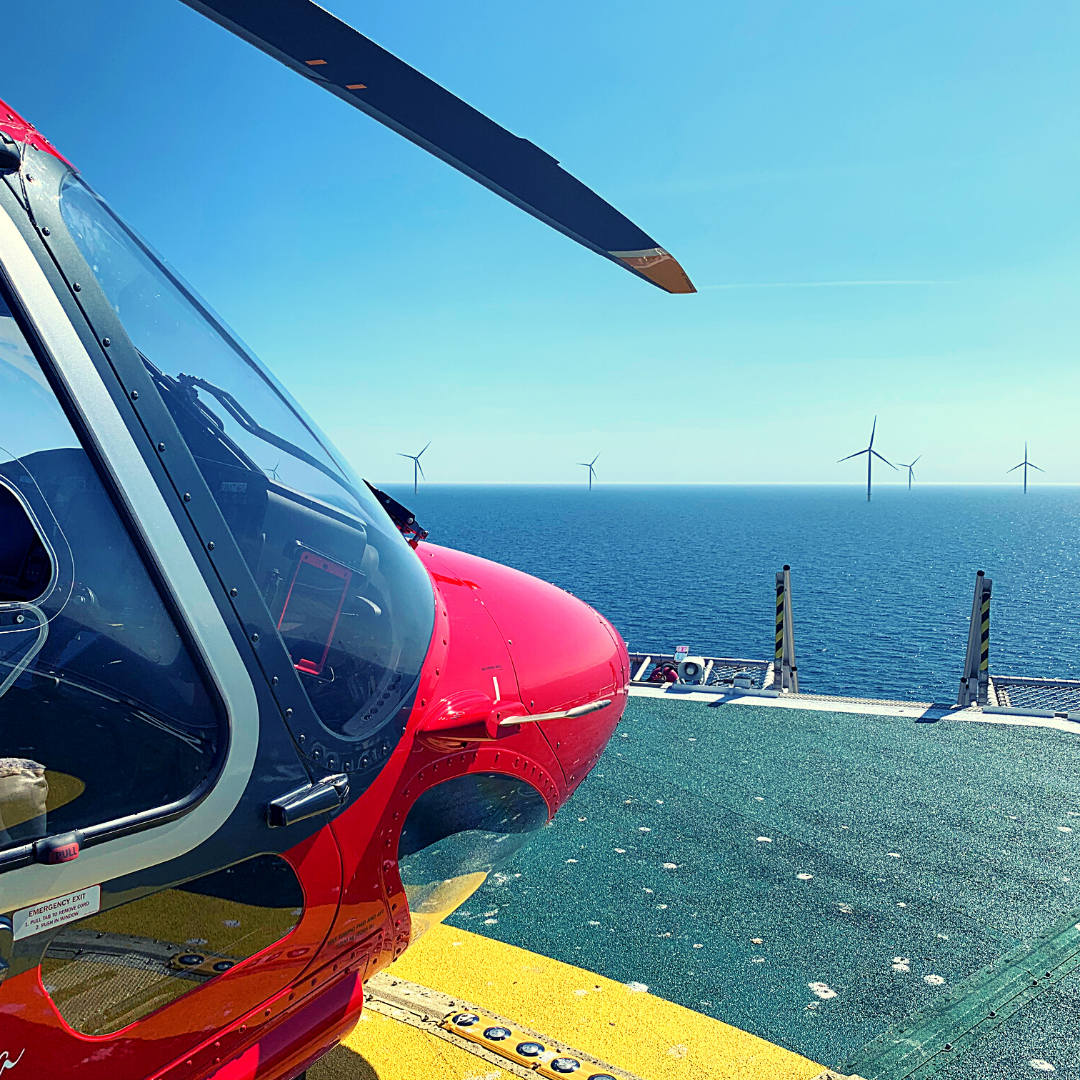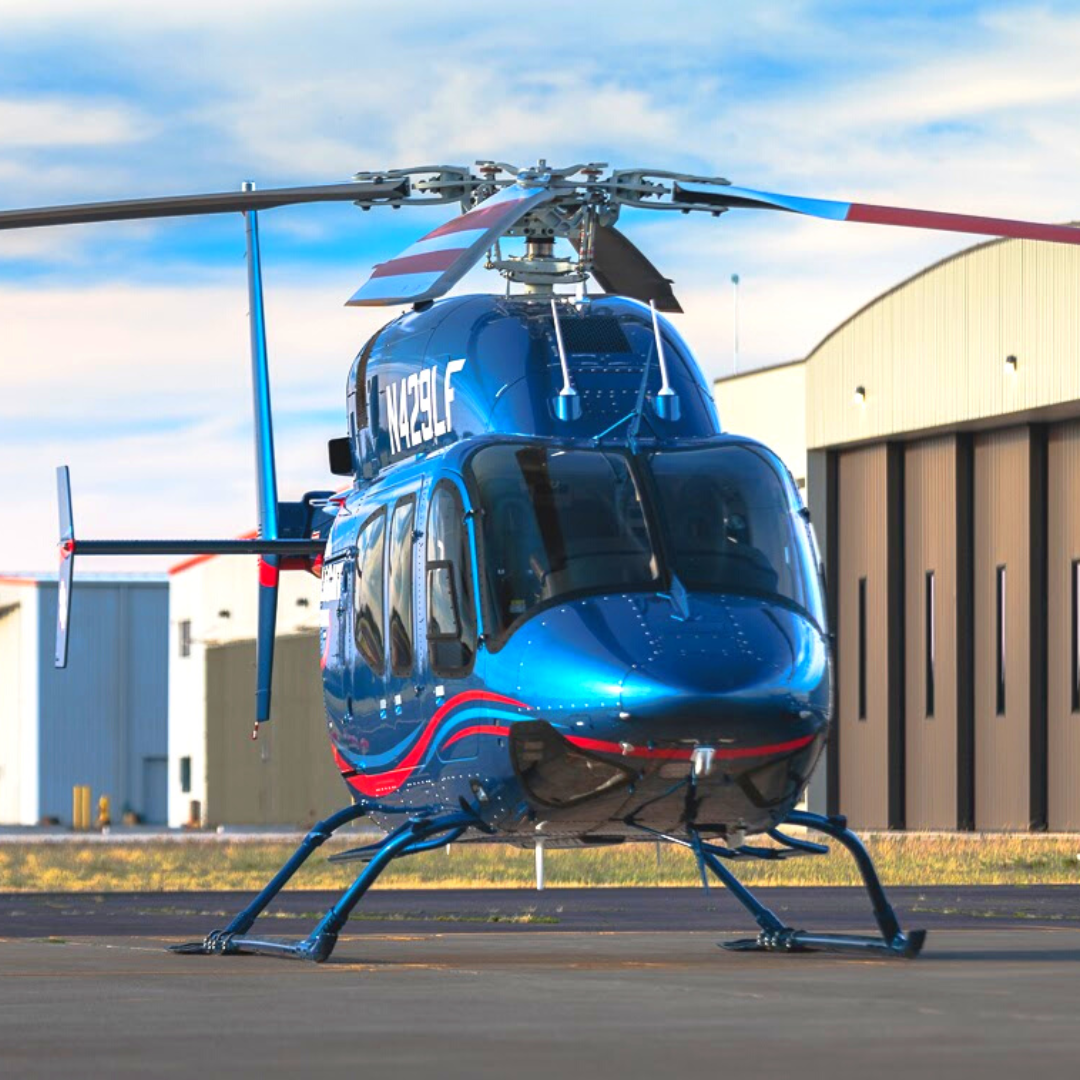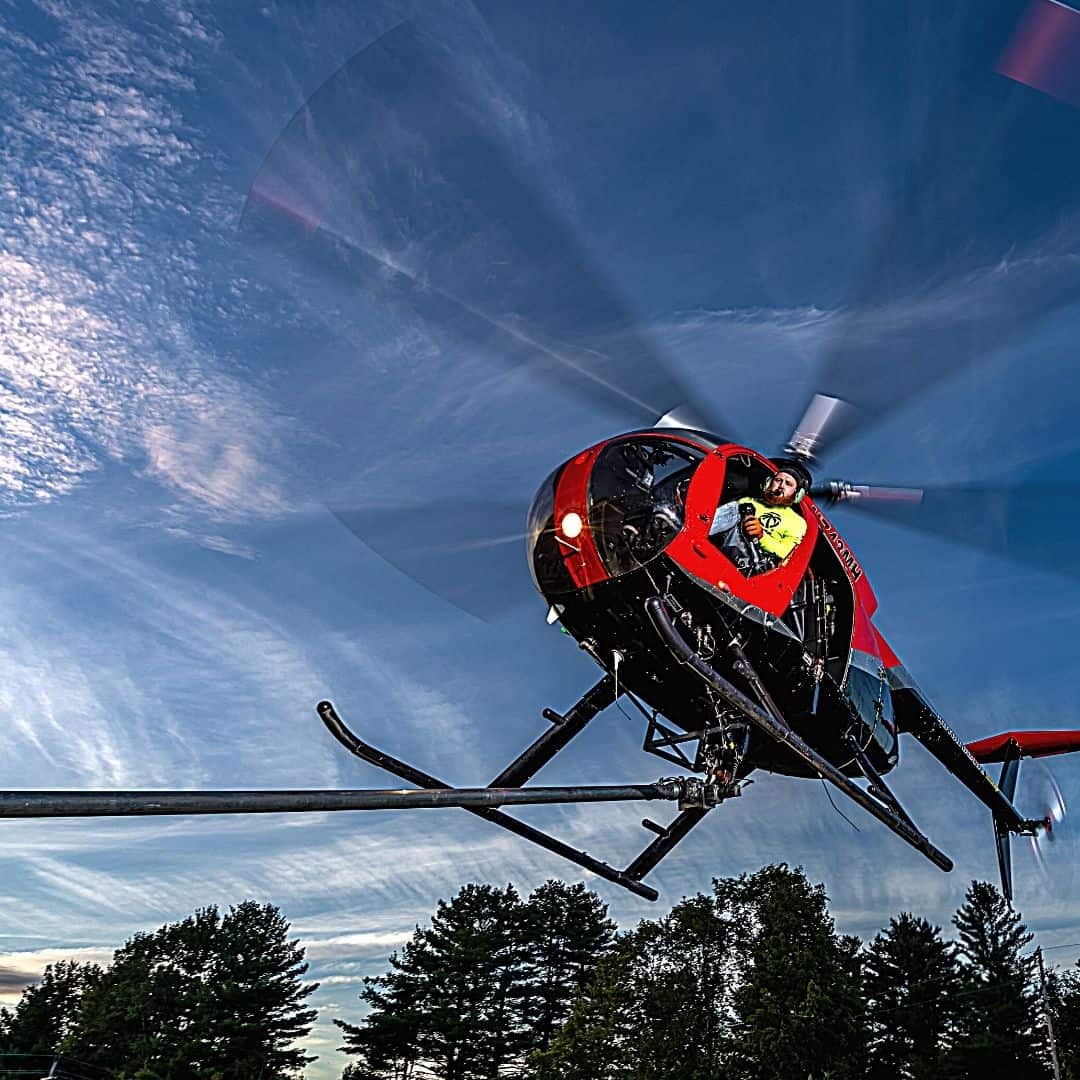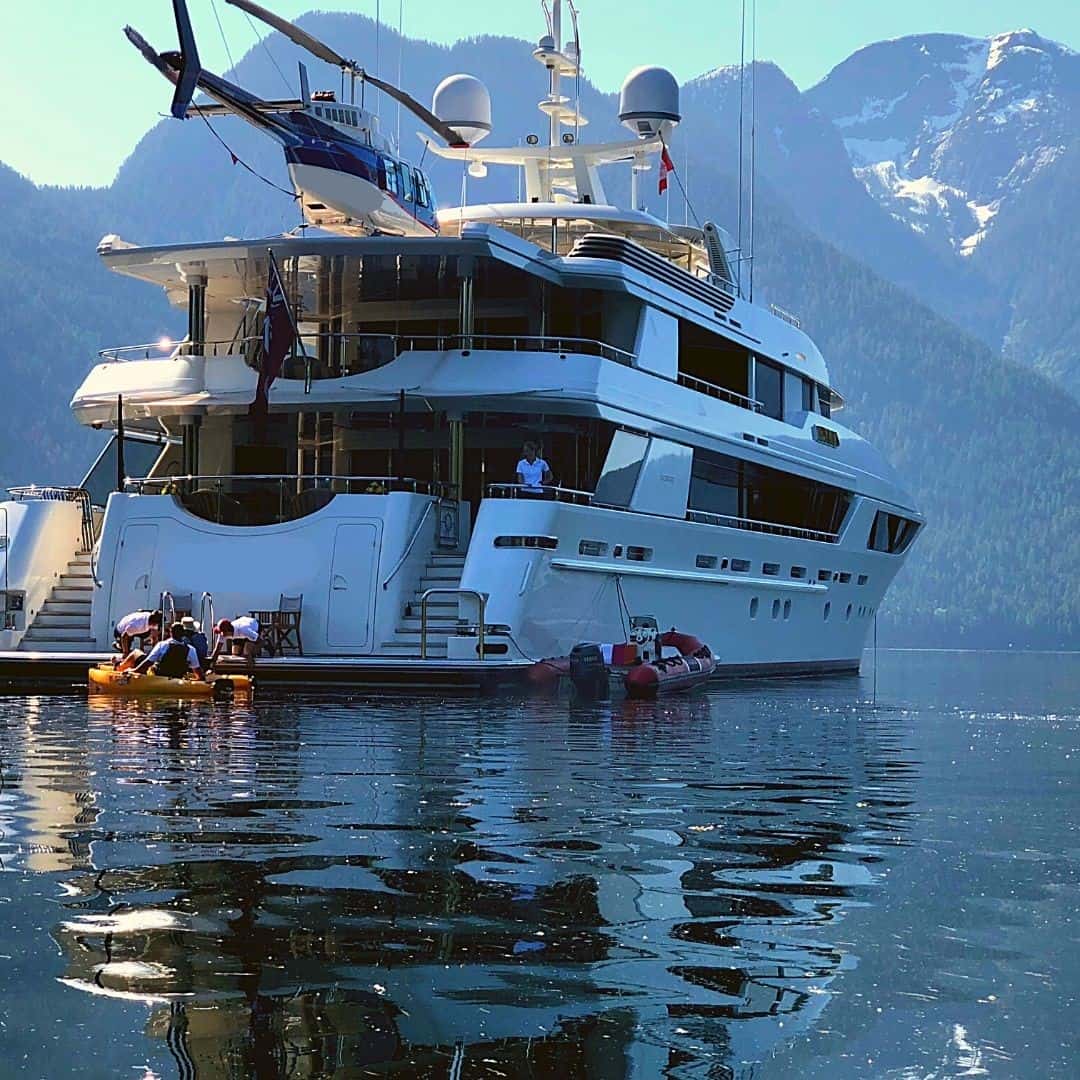Hoist Operations to Offshore Wind Farms is one of the fastest-growing sectors of the Helicopter Industry. More common in Europe, these operations are typically carried out in the unpredictable environment of the North Sea in Light Twins such as the EC135
James Donald gives a great example of a “Day In The Life…” to help those interested in Hoisting Operations, better understand some of the decisions that go into getting the job done and keeping it safe.
The Rotor Break
by James Donald
Life has a funny way of working itself out. From a very young age, I always wanted to be an aviator; my first inspirational moment was a primary school trip to what was then Bond Offshore Helicopters, now Babcock, in Aberdeen, Scotland. This fuelled my desire to fly.
There would be many hurdles to overcome, not least the advice of my school careers advisor, who told me that I would be “wasting my time” and that it was unlikely that I would become a pilot. Ten years later I proved him wrong by gaining my CPL(H).
After some time as an instructor on the south coast of England, I began flying S92s out of Aberdeen and Shetland, taking me full circle back to that primary school trip. I spent four enjoyable and interesting years doing the oil and gas runs to and from enormous platforms located in one of the World’s harshest flying environments. Then in 2015, the oil price collapsed and with that, so did my time in the S92.
At first it felt like a huge blow to my career, but the disappointing situation in which I found myself was, with hindsight, a great stroke of luck. The experience I had gained was to open a door to a different form of flying that I had not previously considered.
I obtained an EC135 type rating and set out sending out CVs and cover letters like a machine gun in the hope that an opportunity might present itself. It did. Before I knew it, I had moved to Germany and was attending a hoisting course.
Training was an intense couple of months, after which, I was sent to the various bases from where we operated. There were four in total, but one, in particular, stood out to be the most challenging; the infamous Heligoland. This rock in the middle of the German Bight was steeped in history. One of Hitler’s key sea fortresses during the Second World War. The Allies used it to unload ordinance that they did not drop in Europe and it holds claim to having seen the biggest non-nuclear explosion ever, when the Allies attempted to literally blow it out of the water. An interesting history to say the least.
Image above shows Heligoland, a small archipelago in the South Eastern part of the North Sea
Nowadays, for most of the year this tiny North Sea island is battered by wind, rain, hail, sleet, and snow. There are three large windfarms located to the north and our job was to fly the technicians there from the island when sea conditions didn’t allow boat operations. We had to fly alongside the ‘basket’ located at the top of the wind turbine and lower the technicians and cargo down on a hoist. After some training, this becomes quite routine. We are trained to work as a team and maneuver the aircraft close to the target. Teamwork is essential, particularly when it involves what is referred to as a ‘dead turbine’ where we carry out the task while the blades of the turbine are still moving slowly. This certainly demands a lot of trust in your hoist operator.
When the days are bright and blue, things generally work out, but it becomes significantly more challenging when the conditions are poor. Weather on the North Sea can change seemingly at the flick of a switch, especially in winter, making planning much harder. When working within the wind parks, flying must be VFR and there are limits to which we must adhere to ensure safety. This means at least a 600ft cloud base and 2km horizontal visibility, so the wind turbines remain visible.
Working with the technicians you get to know them well and build a rapport with them. You feel great responsibility for them and their safety while doing the job. On one particular winter’s day with howling wind and blowing rain, my hoist operator and I made the 20 minute walk to the hanger at 0600 to prepare the aircraft and do the flight planning. In the warmth of the hanger, my hoist operator, who is also a trained technician, looked over the EC135 to double check that the aircraft was all set to go. I set to work gathering all the information needed for the mission, which was to take one team up to the most northern wind park for one client, return to the island to refuel and then fly another team to the most southerly wind park.

I obtained the weather from the relevant sources that I have at hand and it was not looking great. There was an active squall line going east-west about 40nm north of the northern wind park that I had concerns about. I needed to confirm that it was not going to move south to where we were due to be operating. After some more in-depth evaluation and discussion with the met office, I was assured that it wouldn’t do so. The cloud base was at approximately 1000ft and the visibility at 4km with a lot of moisture in the air. It was eerie, almost misty. Following the met office confirmation and having discussed the situation with my hoist operator, we both agreed that it was safe to do the drop-off. As per standard operating procedure, once we were all in our offshore survival suits and lifejackets we briefed the hoist team on the weather situation, where we were planning to go and advised them to keep an eye on the conditions in and around the wind park when they could. Even though wind parks all have remote cameras to monitor the area, ‘eyeballing’ it is far better.
The helicopter was pulled out of the hanger, refuelled, loaded with the guys and cargo and within 30 minutes we were airborne. We climbed through misty skies to 1000 feet and I engaged the autopilot. At the base of the clouds, we were in and out of it but could always see the surface. I carried out the after take-off and cruise checks from memory. Cruising at 120kts we would be at the destination in 30 minutes. I contacted the control room based on the island, requesting clearance into the wind park and confirmation that the designated wind turbine was in the correct position for hoisting. “Helitravel 24D you have a green light for entering the windfarm and a green light for hoisting on A17” came the response.


Pre-landing checks completed, we landed on the wind park’s platform and my hoist operator assisted one of the technicians off the aircraft with the cargo. This was done to ensure that we were a bit lighter and also that while we were hoisting over the turbine, we were within the aircraft’s limits should we lose an engine. The two other technicians remained on the aircraft to be dropped at the top of the 400 ft platform on the turbine. It was essential that a minimum of two personnel remained on the turbine at any one time. With engines returned to ‘flight’ from ‘idle’, pre-takeoff and hoist checks done, we lifted for the turbine. “Cabin double check” I said, to which my hoist operator replied “Cabin checked, secured and ready for hoist”. Climbing up to 400ft over the sea I called “Speed below 60, you are cleared to open the door”. There is an increase in airflow in the aircraft and a considerable increase in noise coming through my helmet’s headset as the wind interferes with my hoist operator’s mic. Slowly and positively, I maneuver the aircraft into a safe position for my hoist operator. I give him the all-clear to hoist and then it’s over to him. Holding my position just above, but next to the basket, I check what power I am using in the hover. I inform my hoist operator that we are ‘safe single’ meaning that should we lose an engine, we had 2 minutes to maintain our position, sort the situation out and fly away rather than fly away immediately. He now had me in control, “right 3,2,1 stop, hold position, position good, passenger at the door, passenger out of the aircraft, passenger below the skid, reeling out, 3 to the ground, 2, to the ground, 1 to the ground, passenger on ground, unhooked and clear, cable reeling in, cleared to come left” I maneuvered the aircraft left and away from the structure so that my hoist operator could help the second passenger come to the open door which dropped down some 400ft to the raging sea. Once seated in the doorway, the call came, “ready to hoist”, to which I replied “you’re cleared to hoist” and started repositioning the aircraft closer to the turbine while being guided by my additional eyes in the back, who had a better overview of the aircraft position in relation to the turbine and the 100ft blades. When about 12 feet off the basket, the whirr of the Goodrich hoist began again, to repeat the process. Once safely on the turbine, we returned to the platform, quickly loaded the cargo with the help of the third technician and within minutes were airborne, door wide open up to the turbine with the cargo outside and hanging off the hoist, all ready to be lowered to the two technicians who waiting on the turbine. We quickly maneuvered the cargo on and then the third technician joined his teammates to start their days work. With a nod from me and a wave from the hoist operator, we flew away. After hoisting checks were completed, along with a radio check with the team on the turbine, we were all set to return for Heligoland for our next team to repeat the same task but this time to the southern wind park.
An hour and a half later, having refuelled, we were back at the base, two teams safely on their respective turbines and now we had to wait for the call for pick up or a flight if they needed any parts or equipment to be taken to them.


Aircraft refueled and ready to go we waited while keeping a close eye on the weather, which we knew wasn’t great. No calls came from the wind parks or the control room so things seemed to be going well as planned. The call came in about 1300 to pick up the team from the southern-most wind park. We got kitted up and off we went, the weather seemed to have deteriorated somewhat from the met office and charts briefing. From experience, I had a distinct feeling that something was brewing. The weather en-route to the pickup of the first team was quickly deteriorating. Using all our experience we got clearance into the wind park and managed to collect all three technicians and the cargo at once under darkening skies, with clouds that were closing in fast. Once the technicians and cargo were safely on the aircraft we expeditiously vacated the wind park. Seeing that the weather was closing in earlier than had been forecast, we radioed ahead to the control room of the team still on the other turbine, advising them that the weather was quickly deteriorating and that we needed to get the team mobilised, ready for us to come and do an early pick-up. While transiting back to the island, the clouds continued to darken and it was apparent that things were not going in our favour. On landing, we quickly shut the aircraft down and started our refuel for the second recovery flight as the first team vacated with their cargo. Suddenly the heavens opened and a serious downpour engulfed us. Visibility dropped to about 2 km or less and the cloud base was clearly lowering.
A communications tower on the island which rose to approximately 600 feet provided a good guide for cloud base and it was just above it. I spoke with my hoist operator on the evolving situation on whether he was still happy to continue. After some discussion and quickly looking at the met office weather radar, we agreed that it was safe to make our way back up to the wind farm to pick up the second team, though we needed to leave immediately to beat the weather. We certainly did not want to leave them on the turbine overnight, despite the fact they had emergency provisions for such an event.
Flashing the Pratt and Whitney engines up, we set off to get the team back safely… or so we thought. We climbed to 600 ft and as we anticipated, that was where the cloud base was. We were at our limits for hoisting if it stayed like this. We started slowly getting enveloped in the cloud and, though IFR rated, it was certainly not a nice place to be, especially when you do not have the option for an IFR recovery back to base. As the clouds started to gather around us it became quickly evident that we weren’t going to make it through to the wind park for the pickup. Having reviewed the situation as a crew we reluctantly elected to return back to base. With the autopilot all coupled up I turned the aircraft round to track the VOR back to the island, all the while having the cloud forcing us lower and lower. At this point we found ourselves at about 300 feet in intermittent cloud and very poor visibility when all of a sudden out of nowhere “TRAFFIC TRAFFIC”! What the hell? Who was out here with us? I was confused. I tried contacting Bremen Control who we had been in contact with but no reply. Repeated attempts came back with nothing. It dawned on me we were in a bit of an unexpected predicament that made me feel very uneasy, especially with another aircraft in close proximity which I could not see. Evaluating the situation and looking at all my options, I reduced my airspeed to 50 knots on the autopilot, set the RADALT hold and descended the aircraft to 100 feet above the white-topped waves. We broke cloud at about 150 feet. The weather had changed unexpectedly rapidly. With an unknown contact in the vicinity, in poor conditions, and knowing I had to make it back to the island I descended to 50 feet to get clear of the cloud and gain better forward visibility. There, through the murk, tracking the VOR needle were the lights of Heligoland, its lighthouse struggling to cut through the rain and cloud that engulfed it. Steadily heading towards the island and keeping the island’s lights in sight we knew we would make it back safely. As we landed, we had a sinking feeling that the guys were now stuck on the turbine for the night as darkness would follow very soon and there was no way that this unexpected weather system would pass through in time. We shut the aircraft down and called up the control centre for the wind park informing them of what had just happened and that there was no chance of us getting up to get the guys off the turbine. After some discussion, they looked at what options they had available to them. The following call was immediately to the met office centre who had given us the weather forecast. We explained what had just happened and immediately got an apology from them saying that they had not noticed or anticipated a weather system that had been developing over the mainland to move north to us, especially with the squally weather that was in the north that morning. In effect, we had been pincered in and the weather from the south had moved north quicker than expected, catching us out.
While this situation was out of our control, it was a very real reminder that the weather in this part of the world can change in an instant and, that as an aviator you should never underestimate the power and effects of mother nature. It also reiterated that unless it is a life and death situation, there is always another option. The guys unexpectedly stranded on the turbine were picked up by boat later that night when the sea state had settled down and returned safely to the island. The aircraft we encountered was found to be the local military search and rescue aircraft doing training.
Operations now seem to be very much moving from a single pilot to multi-pilot operation especially as the wind parks locate further and further from shore. Having had enjoyed an amazing two years in Germany, working with a great bunch of guys, and learning the skills of hoisting to offshore wind turbines, I decided to return back to the UK to start on a new venture by being part of the world largest wind park, Hornsea. With the first stage of four having 187 – 7-megawatt wind turbines covering an area of 407 square Km, this was going to be another great adventure that I am proud to be a part of. Looking back, the day I was told I would never be a pilot and those dark days facing redundancy in Oil and Gas are now merely a blip in my past that has brought me to where I am today. With the skills and experience I gained, I am now firmly part of the ‘new’ Oil and Gas industry—wind—and my career looks set to be more secure than ever. I am very grateful for the experiences and opportunities that I have had so far and look forward to the future, now flying and hoisting with one of the newest aircraft in the market, the AW169.
There are many things that I have learned from what I have been through so far and the one thing that I have taken from all the experiences, is that life is too short not to take opportunities when they come along. When it comes to careers, if you get the chance, then take it. You can take that into all walks of life. Follow your heart, listen to your gut and do what is right by you.


With over 3000 hrs and Type Rated in the EC135, S92 and AW169, James Donald is currently an AW169 Helicopter Hoisting Pilot for the “Hornsea” Offshore Wind Farm, off the East Coast of England.
James is also the owner of AviatorJob.Com, a brand new recruitment website for the Aviation Industry.
Recommended reading for aspiring helicopter pilots…
Learning To Fly Helicopters by R Randal Padfield.





